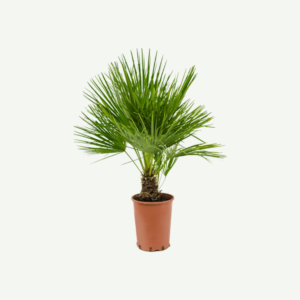Coconut palm tree, scientifically known as Cocos nucifera, is a versatile and economically important plant that belongs to the family Arecaceae. Native to tropical regions, coconut palms are widely cultivated for their fruit, known as coconuts, which have culinary, nutritional, and commercial value. These trees are iconic symbols of tropical coastal landscapes and are often associated with sandy beaches and crystal-clear waters.
Here are some key features and characteristics of the coconut palm tree:
Appearance: Coconut palms are tall, elegant trees with a single, straight, and sturdy trunk that can grow up to 30 meters (100 feet) in height. The trunk is usually grayish-brown in color and marked with characteristic ring-like scars from old leaf bases.
Leaves: The leaves of the coconut palm are large and feather-shaped, growing in a symmetrical arrangement at the top of the trunk. They can reach lengths of 4 to 6 meters (13 to 20 feet).
Fruit (Coconuts): The coconut fruit is a large, round, and fibrous drupe. When young, it is green and filled with a sweet, refreshing liquid known as coconut water. As it matures, the outer husk turns brown, and the coconut meat inside hardens. The coconut meat is commonly used in culinary dishes and desserts, and coconut oil is extracted from it for various applications.
Growing Conditions: Coconut palms thrive in tropical and subtropical regions with high humidity and temperatures between 20°C to 30°C (68°F to 86°F). They require well-drained sandy or loamy soil and are often found in coastal areas.
Cultural and Economic Significance: Coconut palms have cultural significance in many tropical regions and are used in traditional ceremonies and rituals. The tree is also an important source of income for communities that rely on its products, such as coconuts, coconut oil, coconut milk, and other coconut-derived products.
Multipurpose Use: Almost all parts of the coconut palm have practical uses. Apart from the fruit, the leaves are used for thatching and weaving, the trunk for construction, and the coir fibers from the husk for making ropes and mats.
Coconut palms have a unique ability to tolerate the harsh coastal environment, withstanding the strong winds and salty air found in coastal regions. They play a significant ecological role in stabilizing sandy shores and protecting coastal ecosystems from erosion.
In summary, the coconut palm tree is an iconic tropical tree with a range of uses and cultural significance. It not only provides a valuable food source but also offers materials for various traditional crafts and construction needs in the regions where it thrives.
Top of Form






